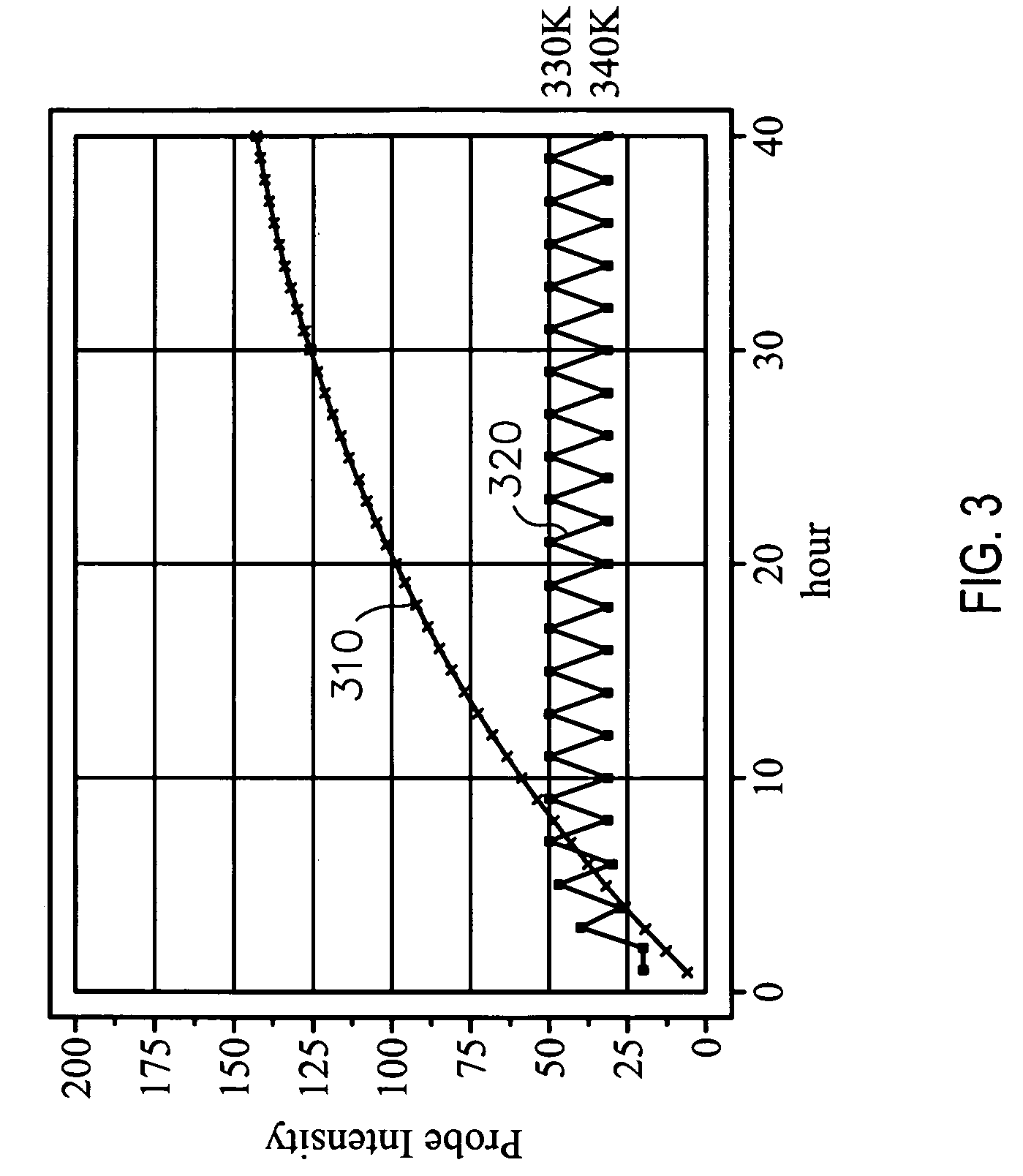Programmed changes in hybridization conditions to improve probe signal quality
a hybridization condition and program technology, applied in the field of programed changes in hybridization conditions to improve the signal quality of the probe, can solve the problems of increasing the noise and bias of the signals read from the probe, non-specific binding, and no known method of reducing non-specific binding, so as to improve the signal-to-noise performance of the probe
- Summary
- Abstract
- Description
- Claims
- Application Information
AI Technical Summary
Benefits of technology
Problems solved by technology
Method used
Image
Examples
Embodiment Construction
[0017]Before the present methods, systems and computer readable media are described, it is to be understood that this invention is not limited to particular genes, genomes, methods, method steps, statistical methods, hardware or software described, as such may, of course, vary. It is also to be understood that the terminology used herein is for the purpose of describing particular embodiments only, and is not intended to be limiting, since the scope of the present invention will be limited only by the appended claims.
[0018]Where a range of values is provided, it is understood that each intervening value, to the tenth of the unit of the lower limit unless the context clearly dictates otherwise, between the upper and lower limits of that range is also specifically disclosed. Each smaller range between any stated value or intervening value in a stated range and any other stated or intervening value in that stated range is encompassed within the invention. The upper and lower limits of ...
PUM
| Property | Measurement | Unit |
|---|---|---|
| hybridization time period | aaaaa | aaaaa |
| hybridization time period | aaaaa | aaaaa |
| signal-to-noise performance | aaaaa | aaaaa |
Abstract
Description
Claims
Application Information
 Login to View More
Login to View More - R&D
- Intellectual Property
- Life Sciences
- Materials
- Tech Scout
- Unparalleled Data Quality
- Higher Quality Content
- 60% Fewer Hallucinations
Browse by: Latest US Patents, China's latest patents, Technical Efficacy Thesaurus, Application Domain, Technology Topic, Popular Technical Reports.
© 2025 PatSnap. All rights reserved.Legal|Privacy policy|Modern Slavery Act Transparency Statement|Sitemap|About US| Contact US: help@patsnap.com



